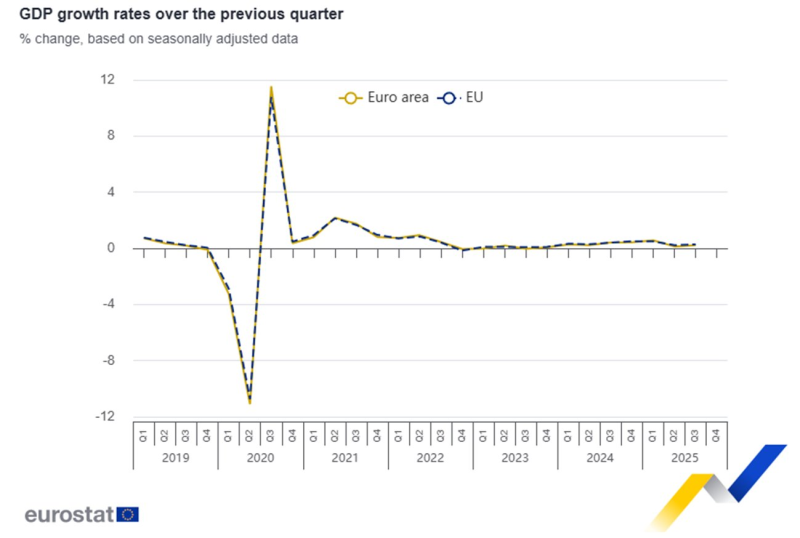● EU_Eurostat reported that Eurozone GDP climbed 0.2% in the third quarter of 2025, ending months of sluggish performance. Year-on-year growth reached 1.3% compared to Q3 2024, based on seasonally adjusted preliminary data.

● The growth, while positive, remains cautious. Consumer spending has stabilized and inflation is cooling, but high interest rates and weak export demand continue to limit expansion. Germany's manufacturing sector, in particular, remains weak—raising concerns about potential stagnation in export-driven economies.
● For policymakers, the uptick offers little breathing room. Governments are weighing targeted investments and tax incentives to boost competitiveness without breaking fiscal rules. Yet some economists worry that overspending could stoke inflation again, creating a tough balancing act between growth and stability.
● Eurostat's data shows the Euro area and EU tracking similar growth patterns. Since the pandemic shock of 2020, quarterly growth has settled into a narrow range of 0% to 0.5%—suggesting the economy has normalized but hasn't regained strong momentum.
● These figures are preliminary and will be updated in December. Analysts expect the final numbers to hold, though risks like volatile energy prices and geopolitical tensions could still slow growth into early 2026.
 Peter Smith
Peter Smith


 Peter Smith
Peter Smith


